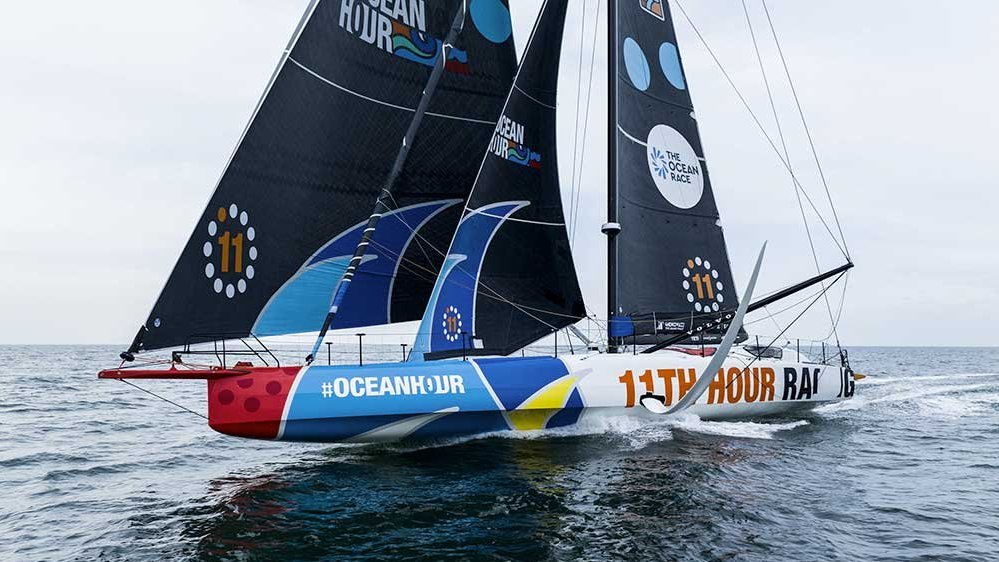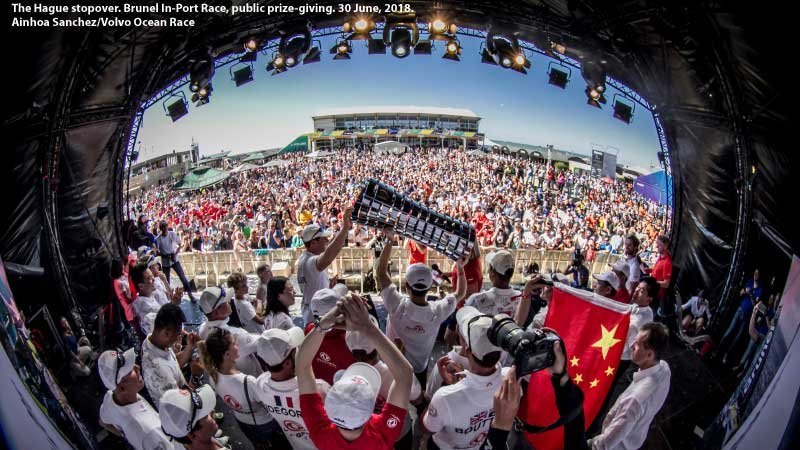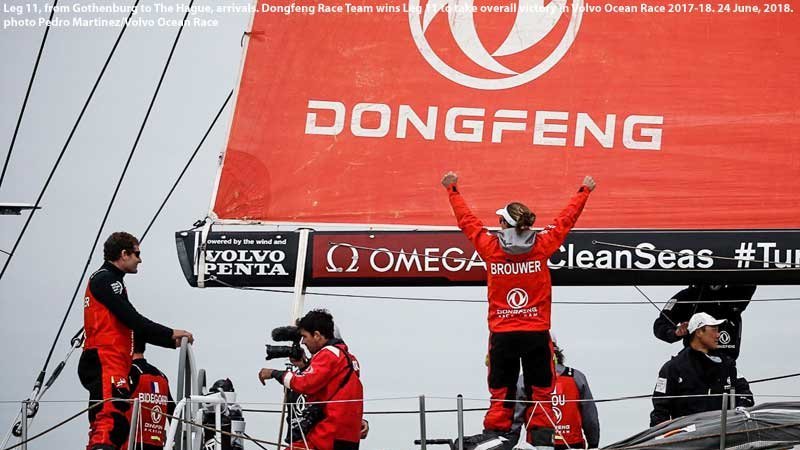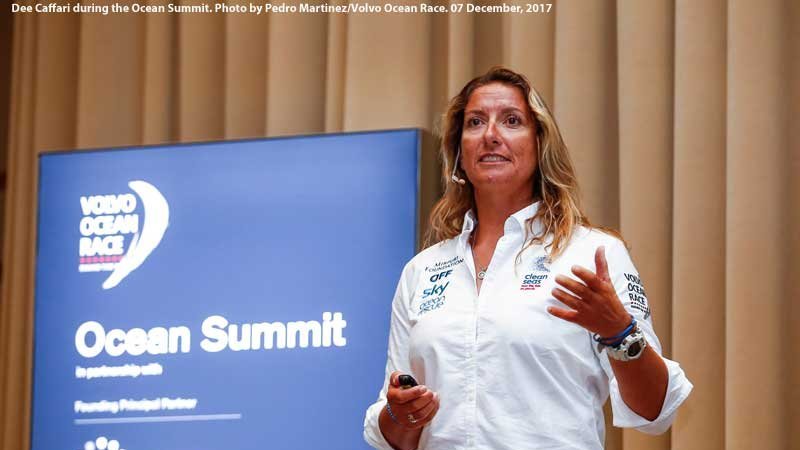Volvo Ocean Race /Leg 5
In The Land Of Black Clouds
mardi 12 mars 2002 –
The weather affect the crews in the tropics not less than in the Southern Ocean. Was it miserable, cold and windy in the Deep South, it is the opposite now : Hot, humid sometimes dead calm. The giant rain clouds are the typical feature of the tropics and they are affecting all the fleet.
Occasionally they bring wind, but more often they suck all the wind away leaving the competitors in a hole as happened to News Corp. But there is a tactic for dealing with them as djuice skipper Knut Frostad describes : "During the night we‚ve been sailing through a few, and they’ve been shaking the fleet about a little bit, but not too much because it’s quite clear all the boats around us have the radar running and they are monitoring the clouds and each time there is a rain cloud coming we have a
similar approach - we try to get in front and get it behind us."
News Corp, who had forged their way into first place soon after the start and opened out a 20-mile lead, lost their advantage in a matter of hours yesterday afternoon. Simply - they ran out of wind. While in the northward flowing counter current, they enjoyed somewhat higher speeds over the ground than the rest of the fleet to the east. Now as they slip from favour and hit a bit of the Brazil Current themselves, their boat speed has dropped substantially. To compound the problems, Ross Field today mentioned that they seemed to be hit by every black cloud in the area. "We seem to be attracting every black cloud there is. We clear one and then we get hit by another ! Unfortunately there is no wind inside these things so we try and get around the edges," commented a frustrated Ross Field, who is still confident that their course to the west of the rest of the fleet will continue to pay off. This morning their track was still some 40 miles to the west of the rest of the boats.
Ocean currents are like water streaming from hoses running in a pool of standing water. The virtual rivers of water create ’meanders’ which are snake-like wanderings that the stream assumes. The currents also create eddies - huge whirlpool-like circulations that occur as the meanders bud off and leave circular currents tens or hundreds of miles across.
But the overwhelming feeling on board is of the heat. The Pilotfish data sent back this morning from on board each yacht shows temperatures down below in each as being a sticky 29-34 degC. Roger Nilson described conditions on Amer Sports One : "Sleeping is very, very difficult. Only at nighttime can you sleep. At the moment it is the coolest time of day and it is 32deg. At the hottest time yesterday it was 37deg below decks. It will become more bearable as soon as you come up into the north east trades".
"Sailing at night now is very nice, you can wear shorts and there is a little bit of cool air on deck," added Frostad. "During the daytime it is a little bit too hot for my liking."
For the crews this comes a stark contrast to the conditions they experienced on the previous leg, but the consensus back from the boats is most prefer racing in the extreme heat to the extreme cold. This is mainly because of the stress factor, which although high is much reduced in these waters where the chance of collision is limited to occasional flotsam and there are no death defying passages through fields of potentially lethal icebergs.
Volvo Ocean Race Position Report, Day 4, 0956 GMT
PS Yacht Latitude Longitude DTF CMG SMG TFHR DTL DTL-C ETA PO
– 1 TYCO 16 38.48S 037 04.24W 03953 017 11.0 244 0 -2 27 MAR 02 26
– 2 AART 16 39.28S 037 03.80W 03954 019 10.5 242 1 +1 27 MAR 02 27
– 3 ILBK 16 39.40S 037 03.92W 03954 019 10.6 243 1 +0 27 MAR 02 35
– 4 AONE 16 41.24S 037 03.44W 03955 018 10.8 243 2 -1 27 MAR 02 27
– 5 DJCE 16 41.72S 037 05.20W 03956 018 10.7 239 3 -1 27 MAR 02 21
– 6 ATOO 16 47.00S 037 07.48W 03962 017 10.7 240 9 +0 27 MAR 02 10
– 7 NEWS 16 37.32S 037 53.92W 03966 021 10.0 205 13 +4 27 MAR 02 21
– 8 TSEB 16 52.96S 037 13.48W 03969 015 10.8 233 16 -1 27 MAR 02 13
 Sea, Sail & Surf news
Sea, Sail & Surf news




